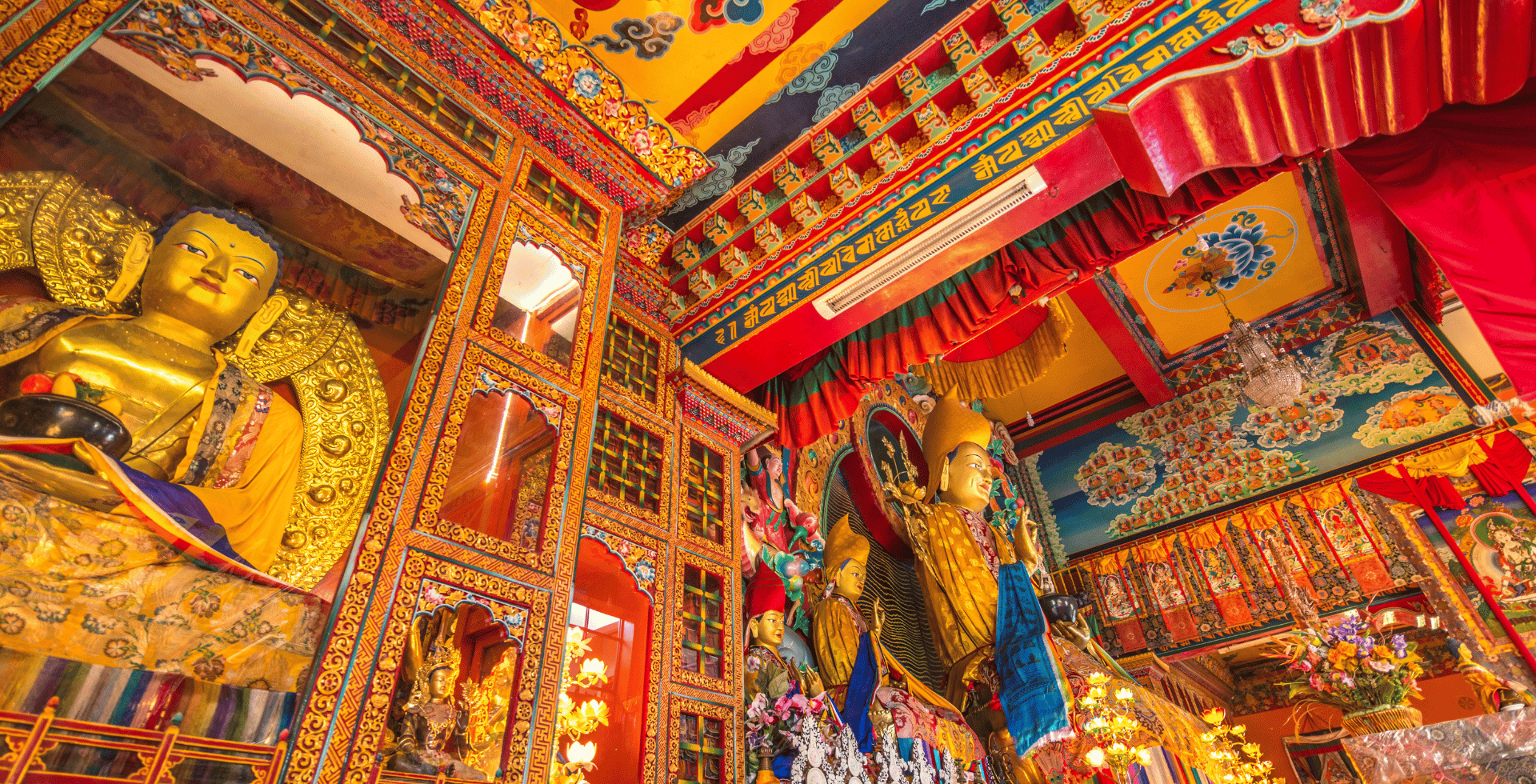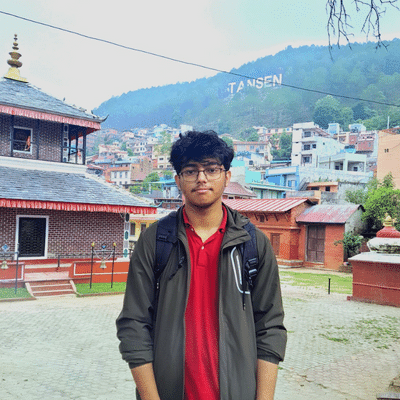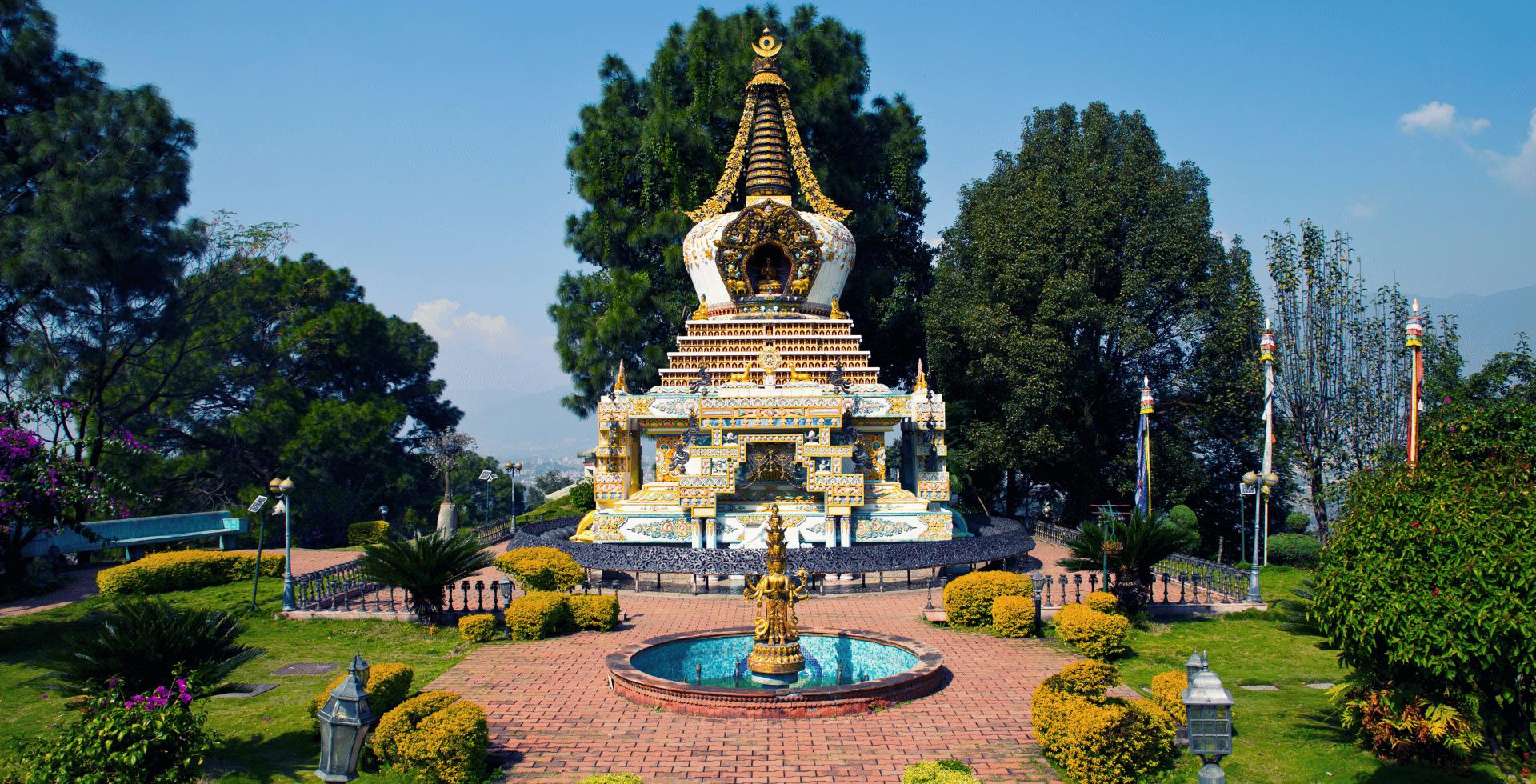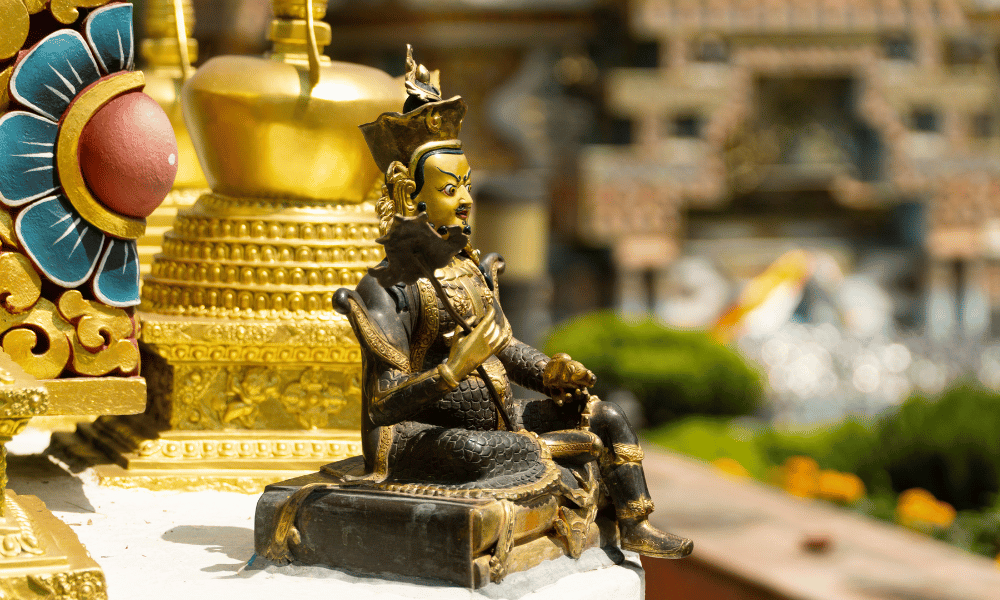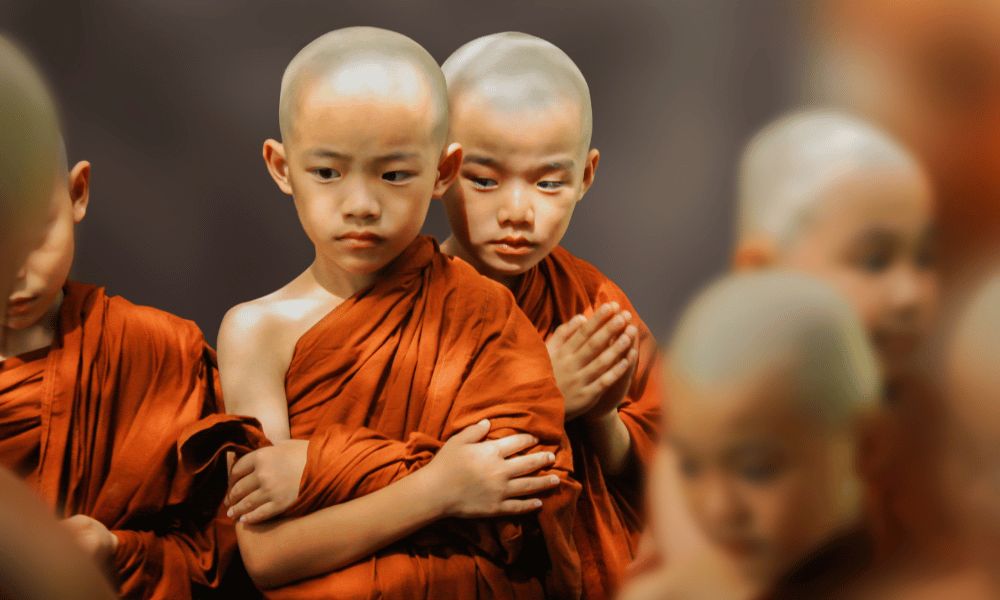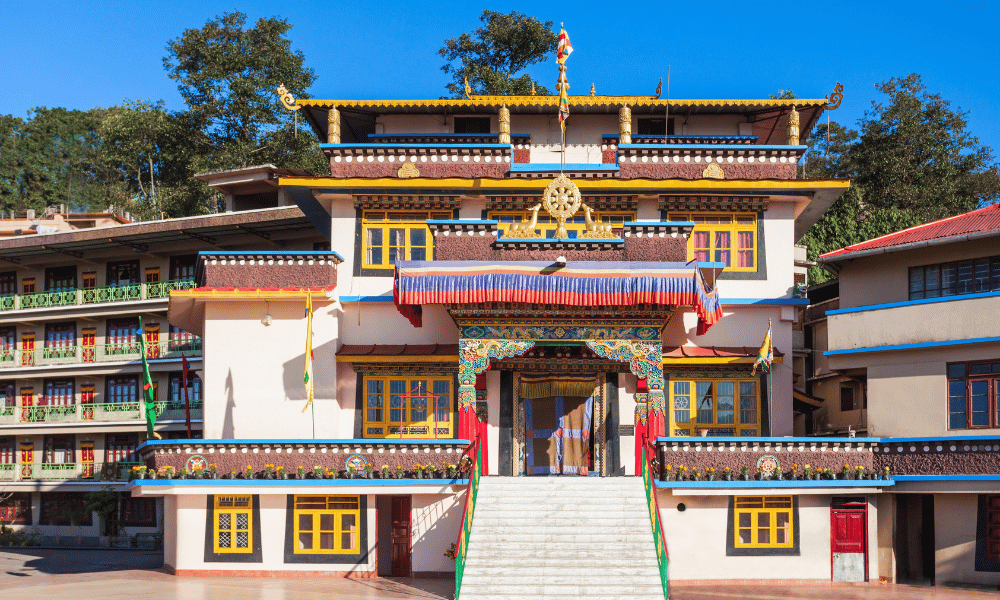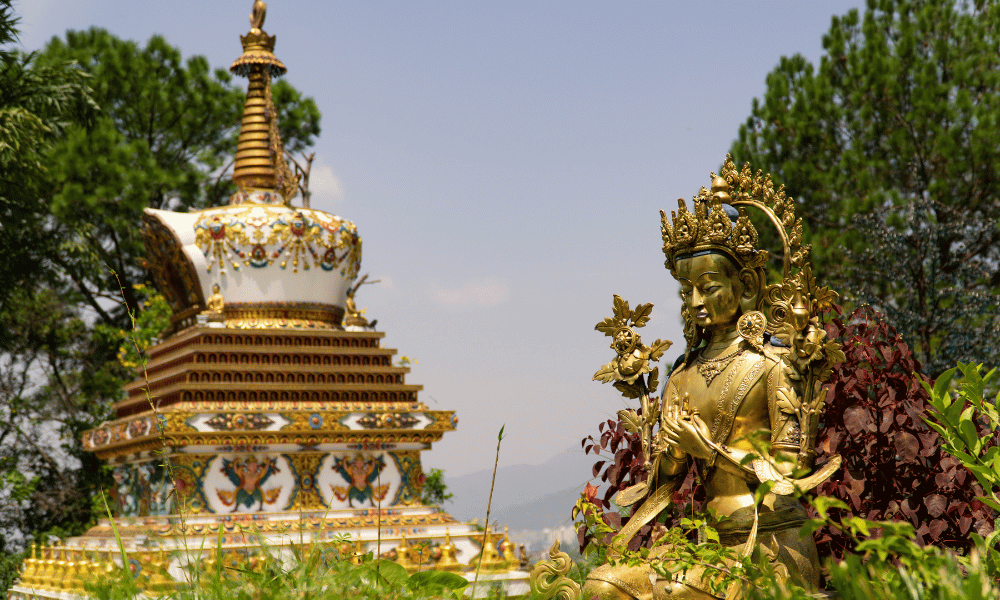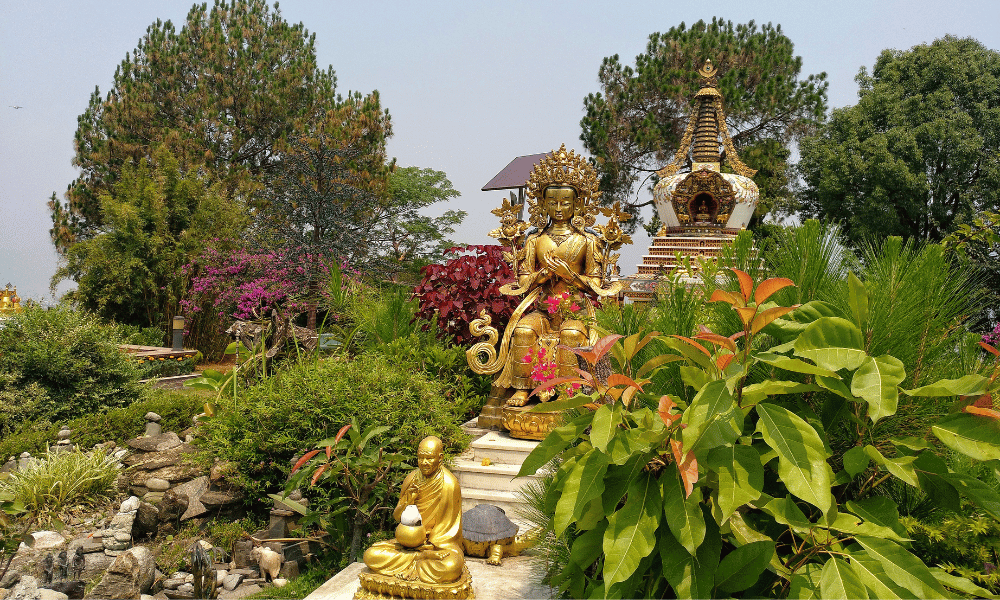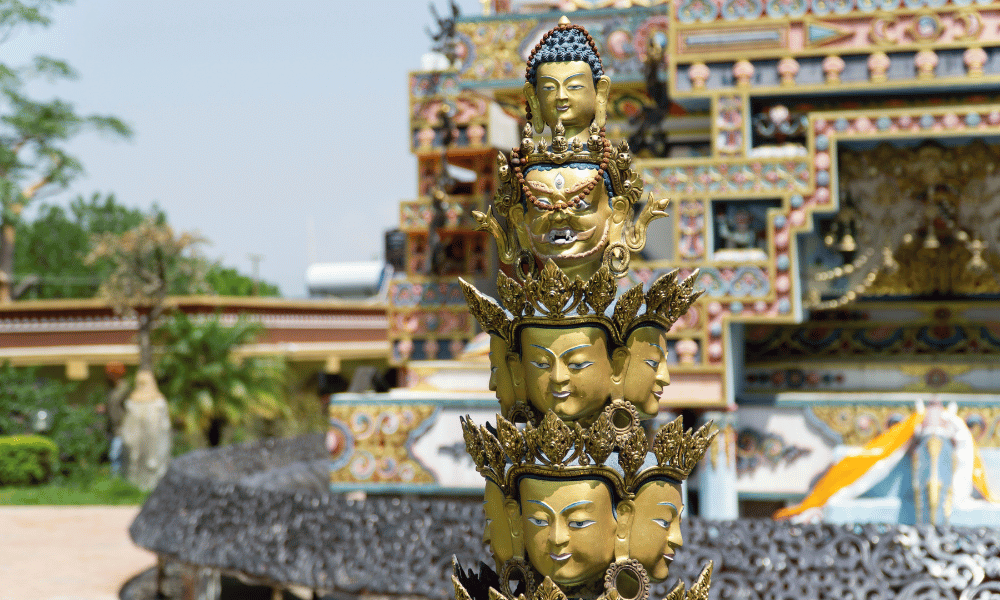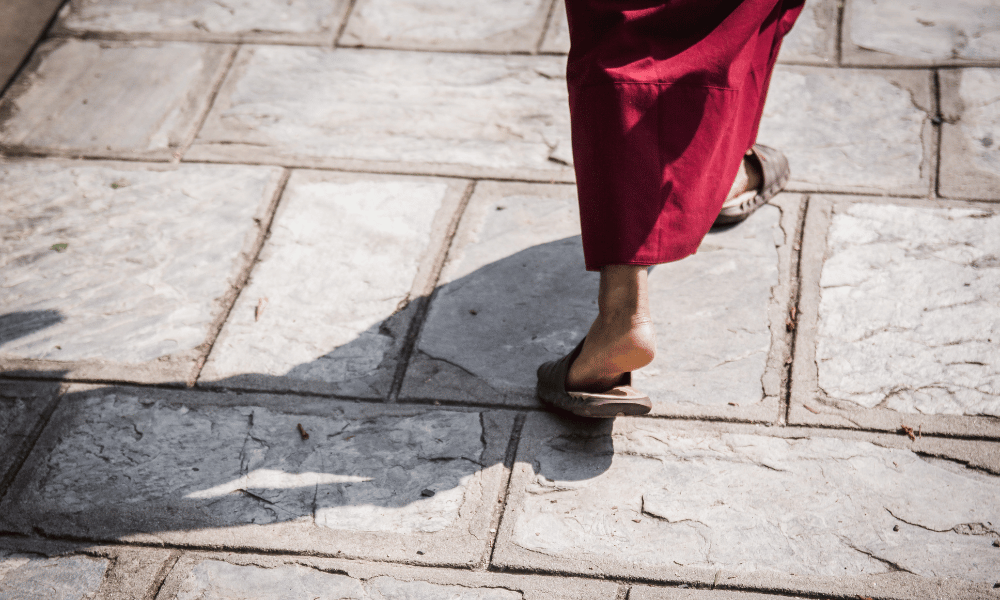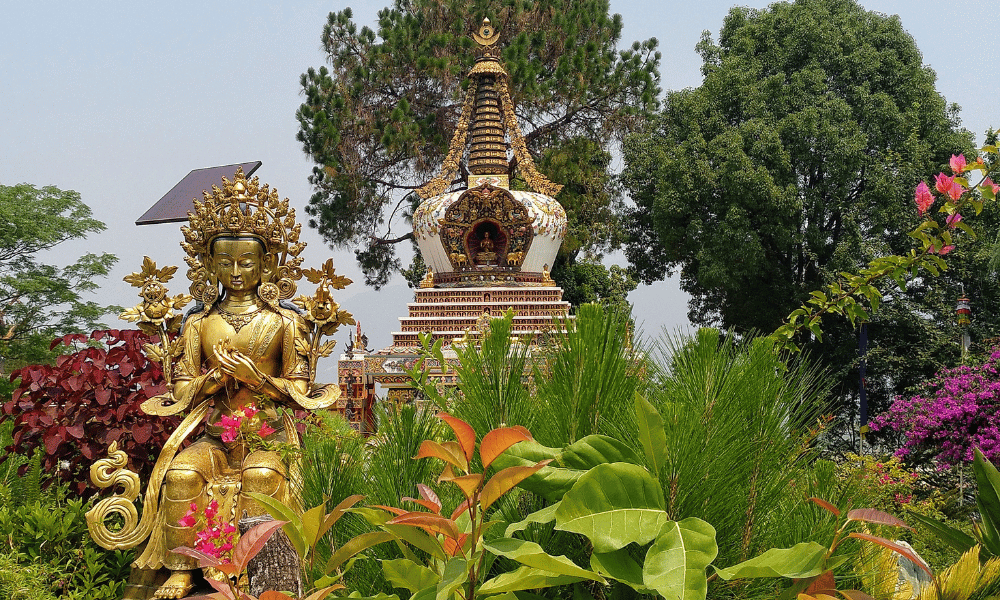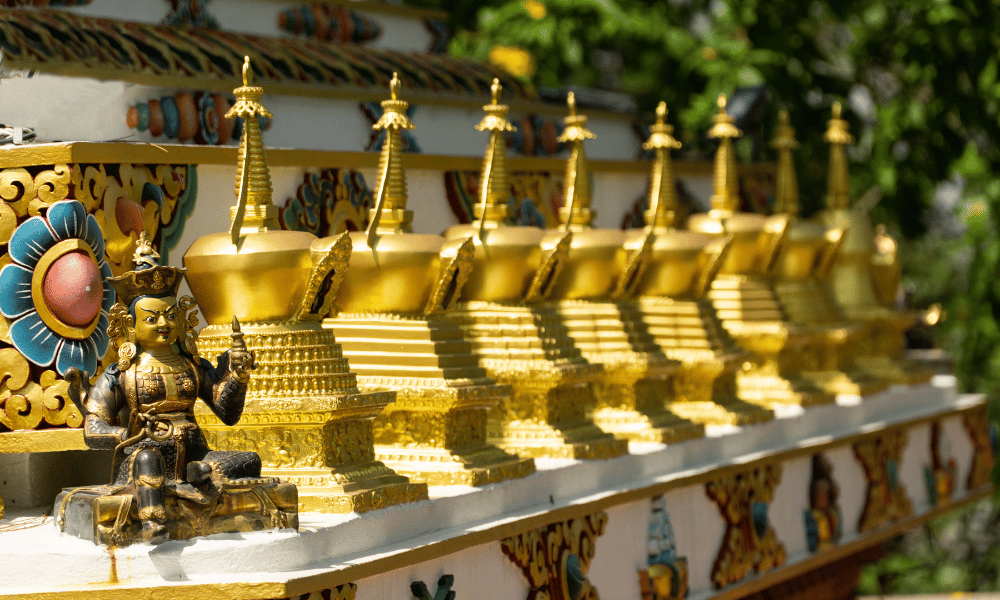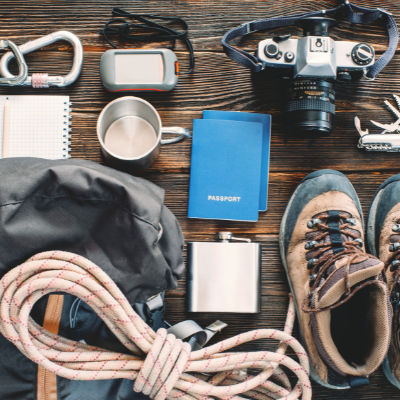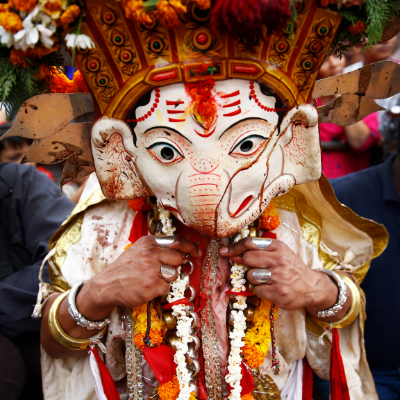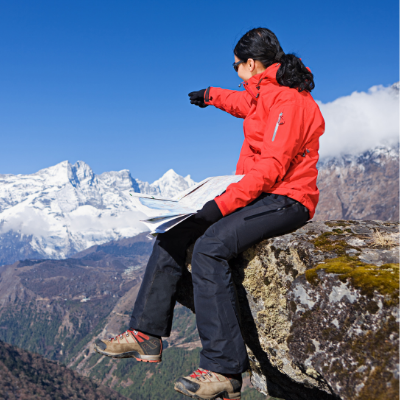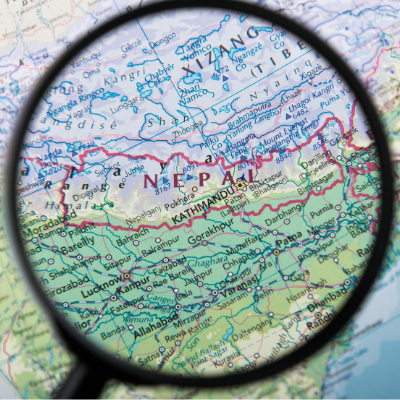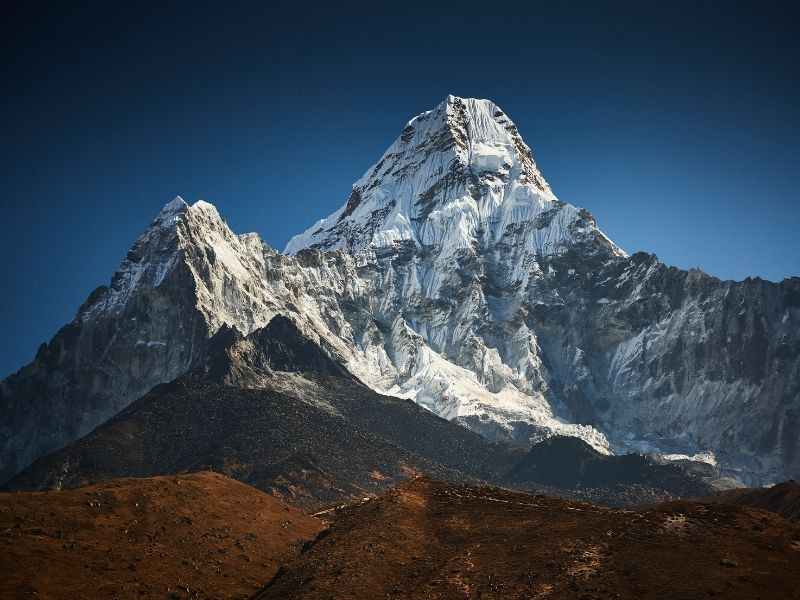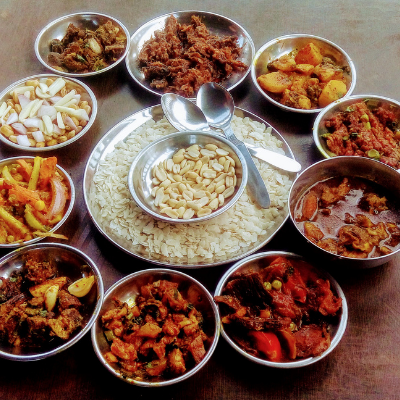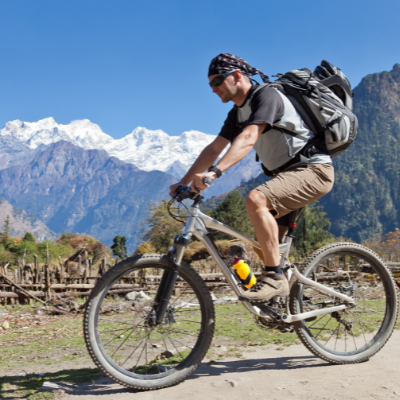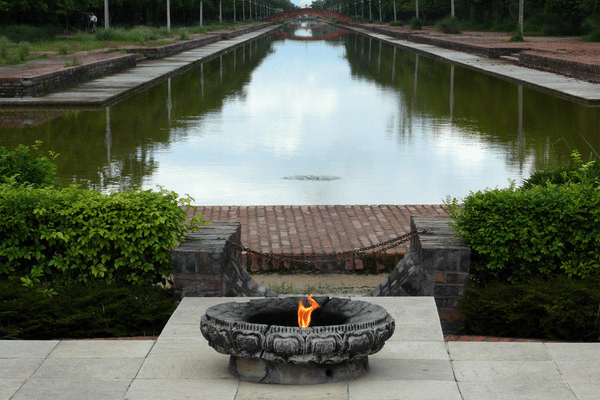A traditional Tibetan Gompa is a rich embodiment of Buddhist symbolism, evoking the teachings of the Buddha and the hope of enlightenment. The gompa typically features various symbols and ornaments that represent compassion, wisdom, harmony, and peace.
At the entrance of the temple, the Dharmachakra, or the wheel of Dharma, is prominently displayed over the front entrance or on the roof. This symbol represents the three turnings of the wheel of the Dharma by Shakyamuni Buddha and the three higher training on the path to liberation from samsara. The rim of the wheel represents higher training in concentration, while the spokes signify higher training in analytical wisdom, and the hub represents higher training in ethics. The eight spokes represent the Buddha’s noble eightfold path, leading to the destruction of obscurations to liberation and omniscience.
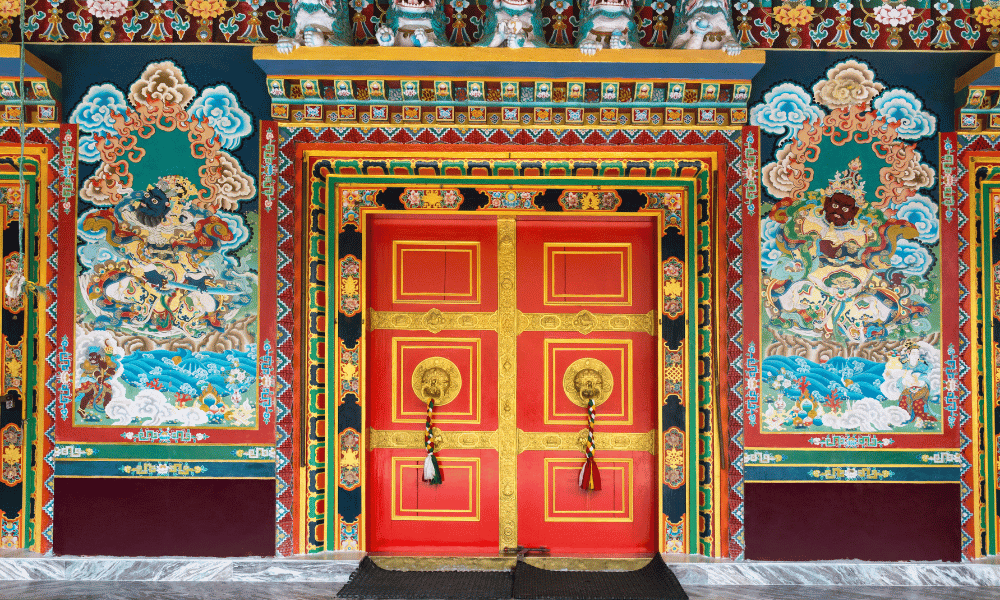
Flanking the Dharmachakra are two deer, considered to represent compassion and peacefulness. The male and female deer symbolize harmony, happiness, and fidelity. These magical creatures have a single horn and are known as the Tibetan unicorn, and they are said to manifest only in the presence of great teachers. The deer gaze up at the Dharmachakra, symbolizing the aspiration for the Dharma.
The interior of the temple features a range of symbolic representations, including the statue of Lama Tsong Khapa, a 15-foot statue filled with the symbols of the vajra body, speech, and mind of the Buddha. The carved images of a traditional altar surround the statue, while silk thangkas are displayed on the side railing, representing the two supreme masters and seven sage ornaments, as well as Manjushri, Maitreya, White Tara, and others. The four pillars of the temple represent the four pearls of wisdom, which one must acquire on the path to enlightenment.
The windows around the top of the temple are symbolic of the wisdom eyes, representing the all-seeing, omniscient quality of the Buddha. The statues on either side of the main statue are representations of Shakyamuni Buddha, Maitreya Buddha, Tara, Atisha (who brought the Dharma to Tibet), the two disciples of Lama Tsong Khapa, Medicine Buddha, and at the far end, a life-size statue of our founder, Lama Yeshe. The temple is also blessed by the presence of the Tibetan canon of the Translated Word (Kagyur) and Translated Commentaries (Tengyur), which represent the Buddha’s holy speech and the collected works of the great Indian Pandits, such as Nagarjuna, Asanga, Chandrakirti, and so forth.
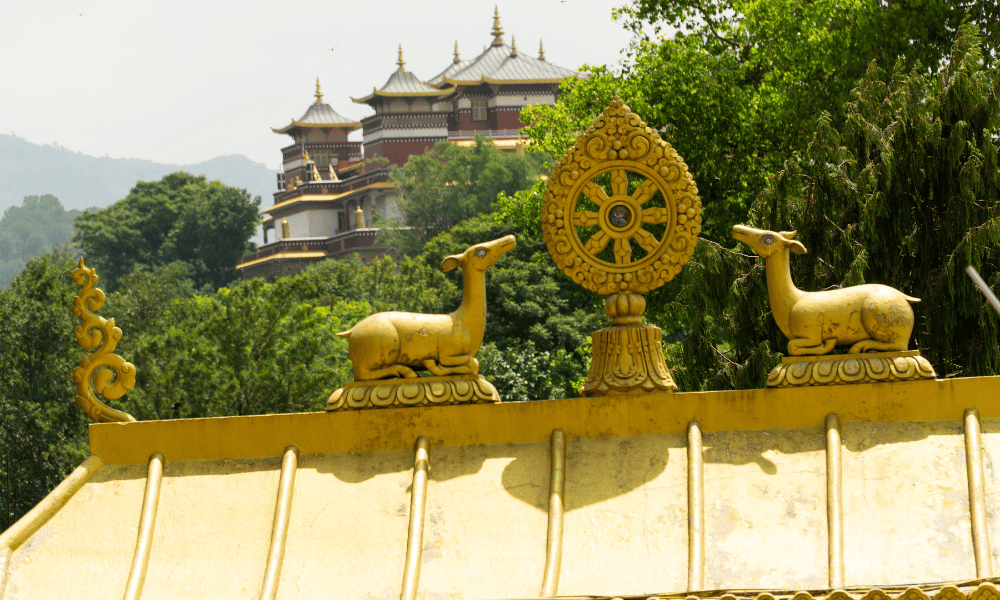
A traditional Tibetan temple is a fascinating embodiment of Buddhist symbolism, featuring a range of decorative elements and ornamental representations of the teachings of the Buddha. The temple holds the hope of enlightenment and offers a space for teachings, empowerments, blessings, tantric pujas, and retreats, extending the opportunity of truth to all who would hear.



